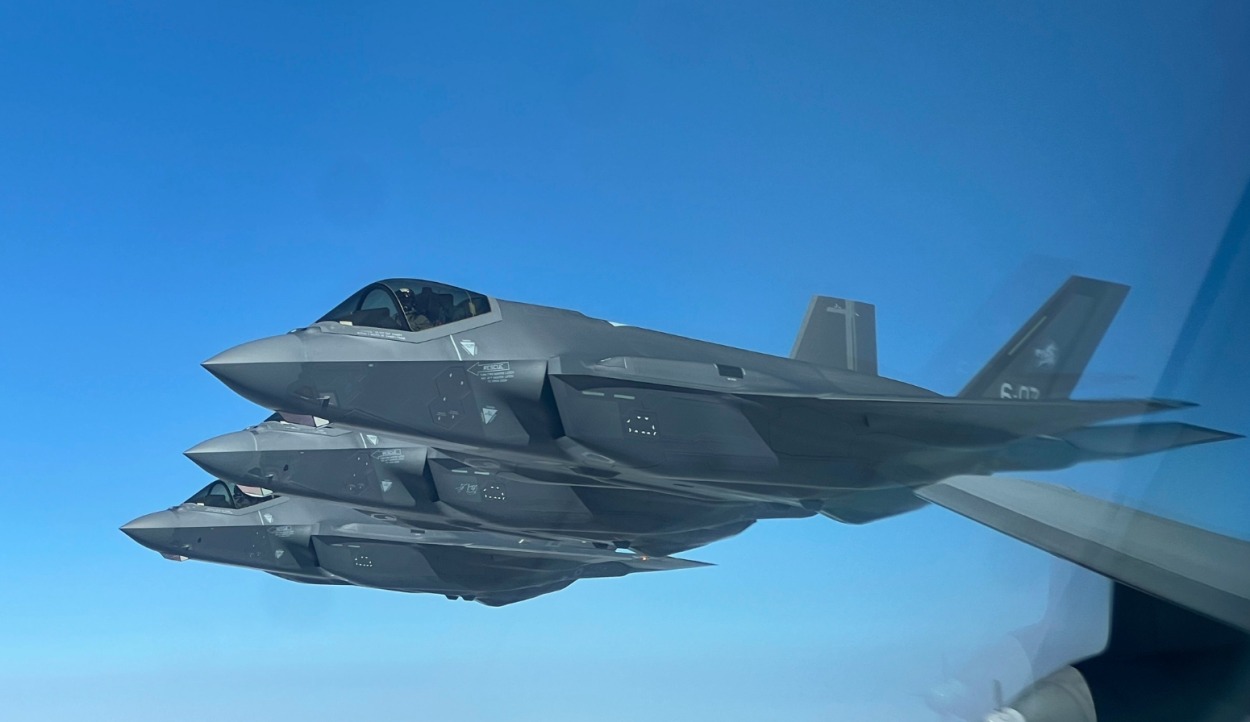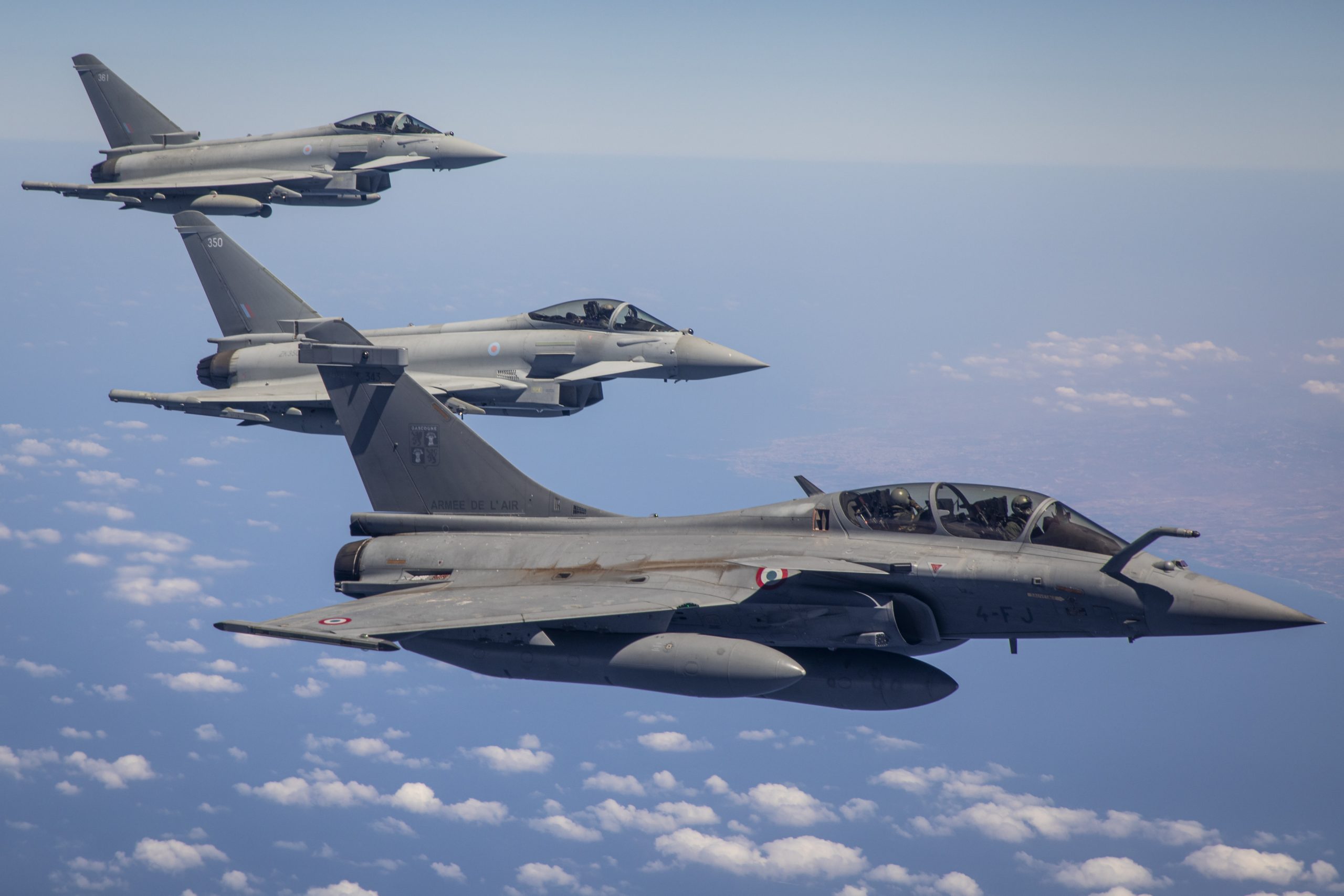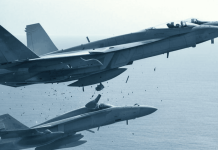On June 6, the skies over Ramstein Air Base were alive with the thunder of jet engines as more than three dozen NATO fighters engaged in a day-long exercise that pitted some of the world’s most advanced military aircraft against each other.
Among the participants were the Eurofighter Typhoons and Dassault Rafales, both 4.5 generation jets that have earned a prominent place in global military arsenals.
The exercise featured 37 aircraft, including fourth—and fifth-generation fighters. The Typhoons and Rafales ‘battled’ in close proximity at altitudes exceeding 10,000 feet, a fight India might have been closely watching.
This basic fighter maneuvers exercise was designed to test the capabilities of these jets in simulated dogfights, provide valuable experience for pilots, and showcase the prowess of these formidable aircraft.
In addition to the Typhoons and Rafales, the exercise included F-35s from the US, UK, Netherlands, and Norway. The presence of these fifth-generation fighters underscored the growing importance of the F-35 in European defense, with plans for 600 of them to be operational in the region by the end of the decade.
The exercise harkened back to the Cold War era, featuring dissimilar training that brought together diverse aircraft and pilots in a unique display of multinational cooperation.
“This is something that is a learning experience that I haven’t seen in many, many years,” remarked Col. Michael “T-Man” Trautermann, the senior German national representative to NATO Allied Air Command.
The event was significant for Ramstein Air Base and its personnel. Known as a hub for US military airlift capabilities and home to the American military hospital at Landstuhl, Ramstein also supports a large community of American service members, families, and contractors.
Maj. Gen. Paul D. Moga, the commander of the Third Air Force, oversees the roughly 50,000-strong Kaiserslautern Military Community, the largest cluster of US troops outside the United States.
The simulated combat took place within 50-by-70-mile airspace, divided into four quadrants, each hosting its own dogfight. Each fighter had a 30-minute window to engage and attempt a simulated kill, providing a realistic and challenging environment for all participants.
Despite fighter pilots’ competitive nature, strict measures were implemented to ensure aerial safety and prevent the exercise from becoming overly aggressive. There were no trophies, just the pursuit of excellence and honing combat skills.
India’s Focus On Rafales & Typhoons
The outcome of the dogfight between the Eurofighter Typhoon and the Rafale during the recent exercise remains classified as of now, but the competition between these two European fighters has always been fierce.
Both Rafale and Typhoon share a common origin in their initial development and requirements-setting phases. However, France eventually left what became the Eurofighter consortium to develop the Rafale independently.
When these jets first entered the export market, the Eurofighter Typhoon gained traction due to direct orders from the countries involved in its development. In contrast, the Rafale struggled initially to attract foreign buyers and was even dubbed the “cursed aircraft.”
However, it has since become one of the most sought-after fighter jets worldwide.
This rivalry often plays out in various export competitions. For example, the Rafale won a significant contract to supply 36 fighter jets to the Indian Air Force, outshining the Eurofighter Typhoon in the final selection.
Recently, the Eurofighter Typhoon garnered attention again when Indian Air Force Chief Marshal V. R. Chaudhari visited Germany and flew a sortie in a Typhoon at a German airbase.
CAS Air Chief Marshal VR Chaudhari is on an official visit to Germany on invitation by his German counterpart Lt Gen Ingo Gerhartz, Commander of the German Air Force. During the tour, the CAS also visited the ILA 2024 and took to the German skies in a Eurofighter Typhoon fighter… pic.twitter.com/VBCSIJ80qb
— Indian Air Force (@IAF_MCC) June 7, 2024
This event sparked speculation about efforts to persuade India to consider the Eurofighter Typhoon for its ‘MMRCA 2.0’ initiative, in which the Indian government plans to procure 114 fighter jets.
While Indian military experts often favor the ‘tried and trusted’ Rafale, the Eurofighter Typhoon’s proven technical capabilities from the original MMRCA competition mean its chances should not be outrightly dismissed.
Eurofighter Typhoon Vs. Dassault Rafale
These fighter jets are regarded as successful projects and are among the most advanced today. While they are somewhat older 4.5-generation fighters and may not match the United States’ 5th-generation F-35 and F-22 fighters, they continue to remain reliable in modern warfare.

Unsurprisingly, both aircraft have similar design philosophies to their global competitors. This is due to their origins in a collaborative European initiative from the Cold War era.
However, as stated, France eventually split off to develop the Rafale independently, while the UK, Germany, Italy, and Spain collaborated to create the Eurofighter.
Yet, the main difference arises from the French requirement for the Rafale’s basic airframe design to be suitable for CATOBAR carrier operations, necessitating high-alpha, low-speed handling, even with external stores attached.
Additionally, unlike the Eurofighter, the Rafale was designed as a nuclear delivery system from the outset. These design philosophies influence the final aircraft: the Rafale emphasizes load carrying and exceptional handling at very low speeds, while the Typhoon focuses on maximum performance at altitude and agility at transonic and supersonic speeds.

In a detailed comparison of the Rafale and Eurofighter Typhoon, Justin Bronk, a Research Fellow at the Royal United Services Institute, explained that the Rafale excels in several areas due to its mature RBE2 radar system.
Additionally, the Rafale F3R surpasses the Tranche 2 or 3 P3E standard Typhoon in load-carrying capacity, electronic countermeasures (ECM), subsonic agility, performance at low and medium altitudes, and overall cost efficiency.
However, Bronk also highlighted areas where the Typhoon holds an advantage. An RAF standard Tranche 3 Typhoon would likely outperform the Rafale in beyond visual range (BVR) performance, interceptor missions, and extreme rate of climb.
Furthermore, the Typhoon shows superior performance in electronic support measures (ESM), terminal countermeasures, and low-collateral strike capabilities.
Moreover, both the Rafale and Typhoon incorporate low observable features, but neither qualifies as a truly low-observable aircraft. When configured without external stores or targeting pods, the Rafale likely has a lower frontal radar cross-section (RCS) compared to the Typhoon. However, this configuration would render both aircraft combat ineffective.
In practical combat scenarios, both aircraft are equipped with external pylons, fuel tanks, weapons, and targeting pods. This increases their RCS, making them detectable at long ranges by modern sensors.
Bronk pointed out that advanced radar systems, such as the Irbis-E on the Su-35 and the Chinese AESAs on the J-10C, J-16, and J-20, as well as ground-based air defense radars, can easily spot them under these conditions.
- Contact the author at ashishmichel(at)gmail.com
- Follow EurAsian Times on Google News




